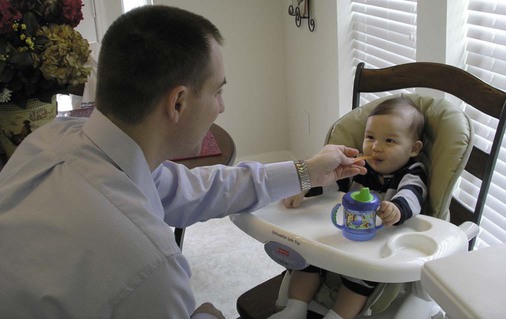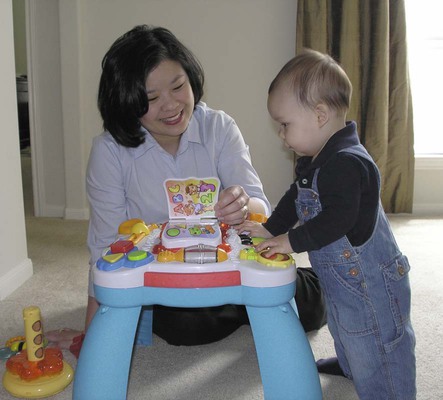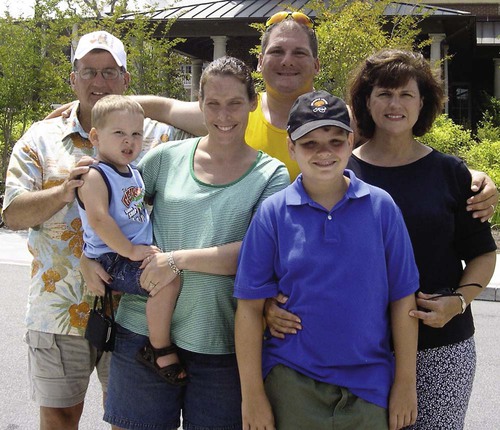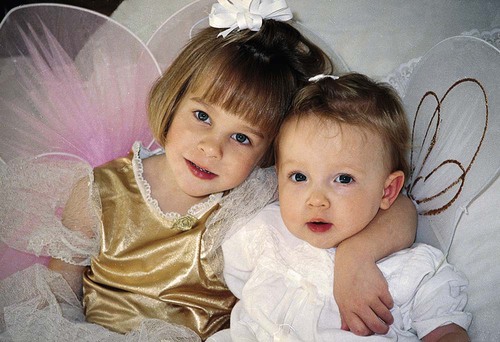Chapter 27 On completion of this chapter, the reader will be able to: • Discuss definitions of family. • Discuss the role transition experienced by new parents. • Explain various parenting behaviors such as parenting styles, disciplinary patterns, and communication skills. • Demonstrate an understanding of special parenting situations such as adoption, divorce, single parenting, parenting in reconstituted families, and dual-earner families. • Define culture and cultural humility. • Describe the subcultural influences on child development in the areas of socioeconomic class, poverty, religion, and schools. • Identify areas of potential conflict of values and customs for a nurse interacting with a family from a different cultural or ethnic group. Earlier definitions of family emphasized that family members were related by legal ties or genetic relationships and lived in the same household with specific roles. Later definitions have been broadened to reflect both structural and functional changes. A family can be defined as an institution in which individuals, related through biology or enduring commitments and representing similar or different generations and genders, participate in roles involving mutual socialization, nurturance, and emotional commitment (Coehlo, Kaakinen, Hanson, et al., 2009). Nursing care of infants and children is intimately involved with care of the child and the family. Family structure and dynamics can have an enduring influence on a child, affecting the child’s health and well-being. Consequently, nurses must be aware of the functions of the family, various types of family structures, and theories that provide a foundation for understanding the changes within a family and for directing family-oriented interventions. The family structure, or family composition, consists of individuals, each with a socially recognized status and position, who interact with one another on a regular, recurring basis in socially sanctioned ways (Coehlo, Kaakinen, Hanson, et al., 2009) (Fig. 27-1). When members are gained or lost through events such as marriage, divorce, birth, death, abandonment, or incarceration, the family composition is altered and roles must be redefined or redistributed. Family function refers to the interactions of family members, especially the quality of those relationships and interactions (Bomar, 2004). Researchers are interested in family characteristics that help families function effectively. Knowledge of these factors guides the nurse throughout the nursing process and helps the nurse to predict ways that families may cope and respond to a stressful event, to provide individualized support that builds on family strengths and unique functioning style, and to assist family members in obtaining resources. Family strengths and unique functioning styles (Box 27-1) are significant resources that nurses can use to meet family needs. Building on qualities that make a family work well and strengthening family resources make the family unit even stronger. All families have strengths as well as vulnerabilities. Parental role definitions have changed as a result of the changing economy and increased opportunities for women (Bomar, 2004). As the woman’s role has changed, the complementary role of the man has also changed. Many fathers are more active in childrearing and household tasks. As the redefinition of gender roles continues in American families, role conflicts may arise in many families because of a cultural lag of the persisting traditional role definitions. Children in a large family are able to adjust to a variety of changes and crises. There is more emphasis on the group and less on the individual (Fig. 27-2). Cooperation is essential, often because of economic necessity. The large number of people sharing a limited amount of space requires a greater degree of organization, administration, and authoritarian control. A dominant family member (a parent or older child) wields control. The number of children reduces the intimate, one-to-one contact between the parent and any individual child. Consequently, children turn to each other for what they cannot get from their parents. The reduced parent-child contact encourages individual children to adopt specialized roles to gain recognition in the family. Siblings, adopted or biologic, who are old enough to understand should be included in decisions regarding the commitment to adopt, with reassurance that they are not being replaced. Ways that the siblings can interact with the adopted child should be stressed (Fig. 27-3). Since the mid-1960s, a marked change in the stability of families has been reflected in increased rates of divorce, single parenthood, and remarriage. In 2008, the divorce rate for the United States was 3.4 per 1000 total population (Centers for Disease Control and Prevention [CDC], 2012). The divorce rate has changed little since 1987. In the decade before that, the rate increased yearly, with a peak in 1979. Although almost half of all divorcing couples are childless, it is estimated that more than 1 million children experience divorce each year. Parental divorce is an additional childhood adversity that contributes to poor mental health outcomes, especially when combined with child abuse. Parental psychopathology may be one possible mechanism to explain the relationships between child abuse, parental divorce, and psychiatric disorders and suicide attempts (Afifi, Boman, Fleisher, et al., 2009). Even when a divorce is amicable and open, children recall parental separation with the same emotions felt by victims of a natural disaster: loss, grief, and vulnerability to forces beyond their control. A recent study found that increasing one of children’s most important interpersonal resources—the quality of the mother-child relationship—improved children’s post-divorce adjustment (Velez, Wolchik, Tein, et al., 2011). Feelings of children toward divorce vary with age (Box 27-2). Previously, researchers believed that divorce had a greater impact on younger children, but recent observations indicate that divorce constitutes a major disruption for children of all ages. The feelings and behaviors of children may be different for various ages and gender, but all children suffer stress second only to the stress produced by the death of a parent. Although considerable research has looked at gender differences in children’s adjustments to divorce, the findings are not conclusive. In the past, when parents separated, the mother was given custody of the children with visitation agreements for the father. Now both parents and the courts are seeking alternatives. Current belief is that neither fathers nor mothers should be awarded custody automatically. Custody should be awarded to the parent who is best able to provide for the children’s welfare. In some cases, children experience severe stress when living or spending time with a parent. Many fathers have demonstrated both their competence and their commitment to care for their children (Fig. 27-4). Often overlooked are the changes that may occur in the children’s relationships with other relatives, especially grandparents. Grandparents are increasingly involved in the care of young children (Fergusson, Maughan, and Golding, 2008). Grandparents on the noncustodial side are often kept from their grandchildren, whereas those on the custodial side may be overwhelmed by their adult child’s return to the household with grandchildren. An individual may acquire single-parent status as a result of divorce, separation, death of a spouse, or birth or adoption of a child. Although divorce rates have stabilized, the number of single-parent households continues to rise. In 2009, 27.3% of children younger than 18 years lived in single-parent families and the majority of single parents were women (Kreider and Ellis, 2011). Although some women are single parents by choice, most never planned on being single parents and many feel pressure to marry or remarry. Managing shortages of money, time, and energy is often a concern for single parents. Studies repeatedly confirm the financial difficulties of single-parent families, particularly single mothers. In 2004, only one third of mother-headed households received any child support or alimony (Annie E. Casey Foundation, 2009). In fact, the stigma of poverty may be more keenly felt than the discrimination associated with being a single parent. These families are often forced by their financial status to live in communities with inadequate housing and personal safety concerns. Single parents often feel guilty about the time spent away from their children. Divorced mothers from marriages in which the father assumed the role of breadwinner and the mother the household maintenance and parenting roles have considerable difficulty adjusting to their new role of breadwinner. Many single parents have trouble arranging for adequate child care, particularly for a sick child. Being a teenage parent adds to the financial burden of being a single parent and can have long-term consequences for the mother and child. Poverty is a well-known predictor of adverse effects on a child’s health and well-being. Approximately 78% of children born to a teenage mother who did not marry or graduate high school live in poverty. In contrast, only 9% of children born to women older than 20 years who marry and finish high school live in poverty (Annie E. Casey Foundation, 2009). Social supports and community resources needed by single-parent families include: • Health care services that are open on evenings and weekends • Respite child care to relieve parental exhaustion and prevent burnout • Parent enhancement centers for advancing education and job skills, providing recreational activities, and offering parenting education Single parents need social contacts separate from their children for their own emotional growth and that of their children. Parents Without Partners, Inc.* is an organization designed to meet the needs of single parents.
Family, Social, Cultural, and Religious Influences on Child Health Promotion
Definition of Family
Family Structure
Family Strengths and Functioning Style
Parental Roles
Family Size and Configuration
Special Parenting Situations
Parenting the Adopted Child
Parenting and Divorce
Impact of Divorce on Children
Custody and Parenting Partnerships

Single Parenting
![]()
Stay updated, free articles. Join our Telegram channel

Full access? Get Clinical Tree


Family, Social, Cultural, and Religious Influences on Child Health Promotion
Get Clinical Tree app for offline access



